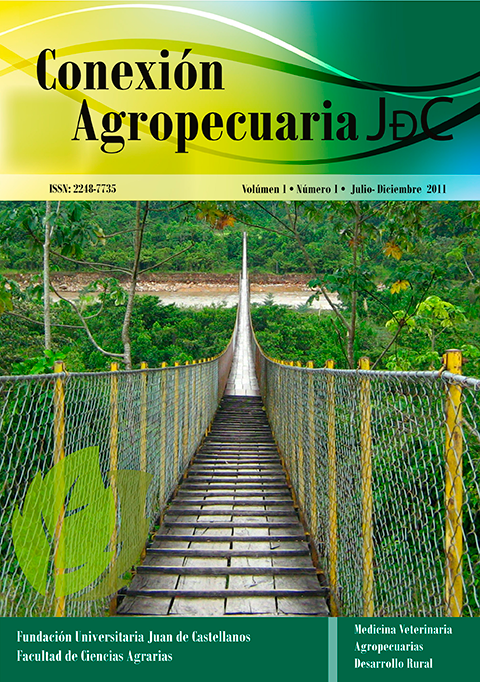IMPORTANCE OF AFLATOXINS AND FUMONISINS IN SOME DOMESTIC ANIMALS
Keywords:
Polluting, carcinogenic, intoxication, metabolite, toxicityAbstract
Mycotoxins are chemical compounds of low molecular weight, produced by fungus and they produce pathological effects as in human beings as in animals. Although the total number of mycotoxins is not known, researchers has considered that thousands of potentially toxic fungal metabolites exist, within mycotoxins of great preoccupation are: Aflatoxins, Tricotecenos (Vomitoxina, Nivalenol, Neosolaniol, T2 Toxin, Diacetoxyscirpenol), Zearalenona, Fumonisinas, Ocratoxin, Citrinin, Esterigmatocistina, Ciclopiazónico Acid, Patulina, alkaloids of the Ergot, and Moniliformina. These mycotoxins are in the most of products of the livestock industry, such as corn, sorghum, soy, silages, cotton pulp and even milk.
Author Biography
Sandra Paola Rodríguez
References
Arellano, J. (2003). Métodos de determinación, identificación y control de Micotoxinas en Ingredientes para la nutrición animal. Asociación Mexicana de Nutrición Animal. Recuperado de http://www.produccion-animal.com.ar.
Caloni, F., Spotti, M., Auerbach, H., Opden Camp, H., Fink Gremmels, J. & Pompa, G. (2000). In vitro metabolism of Fumonisin B1 by ruminal microflora. Veterinary Research Communications, 24 (6), 379-387.
Creppy, E., (2002). Update of survey, regulation and toxic effects of mycotoxins in Europe. Toxicology Letters, 127, 19-28.
Díaz, G.J. y Herman, B.J. (1994). Fumonisin toxicosis in domestic animals. Veterinary & Human Toxicology, 36 (6), 548-555.
D’Mello, J.P.F. & Macdonald, A.M.C. (1997). Mycotoxins. Animal Feed Science and Technology, 69, 155-166.
Engelhardt, J.A., Carlton, W.W. & Tuite, J.F. (1989). Toxicity of Fusarium moniliforme var. subglutinalis for chicks, ducklings and turkey poults. Avian Diseases, 33, 357-360.
Fink-Gremmels, J. (1999). Mycotoxins: their implications for human and animal health. The Veterinary Quarterly, 21,115-120.
Gavin L.M., (2002). Clinical Techniques in Equine Practice. 1(2), 89-93.
Haschek, W.M., Gumbrecht, L.A., Smith, G. & Tumbleson, P.D., (2001). Fumonisin toxicosis in swinean overview of porcine pulmonary edema and current perspective. Environmental Health Perspective, 109, (2), 251-257.
Hussein, S.H. & Basel, J.M. (2001).Toxicity, metabolism and impact of mycotoxins in humans and animals. Toxicology, 167 (2), 101-134.
Johnson, P.J., Casteel, S.W. & Messer, N.T. (1997). Effect of feeding deoxynivalenol (vomitoxin)-contaminated barley to horses. Journal of Veterinary Diagnostic Investigation, 9, 219-221.
Larsen, J.C., Hunt, J., Perrin, I. & Ruckenbauer, P. (2004). Workshop on trichothecenes with a focus on DON: summary report. Toxicology Letters, 153, 1-22.
Larsson, P.E., Tyden, E. & Tjalve, H. (2003). Cell-specific activation of aflatoxin B1 correlates with presence of some cytochrome P-450 enzymes in olfactory and respiratory tissues in horse. Research in
Veterinary Science, 74 (3), 227-233.
Marasas, W.F.O., Wehner, F.C., Van Rensburg, S.J. & Van Schalwik, D.J. (1981). Mycoflora of corn produced in human esophageal cancer areas of Transkei, Southern Africa. Phytopathology, 71, 792-796.
Mc Lean, M. & Dutton, M.F. (1995). Cellular interactions and metabolism of aflatoxin –an update. Pharmacology & therapeutics, 65, 163-192.
Meloche, J.L. & Smith, T.K. (1995). Altered tissue amino acid metabolism in acute T-2 toxicosis. Proceedings of the Society for Experimental Biology and Medicine, 210, 260-266.
Neal, G.E., Eaton, D.L., Judah, D.J. & Verma, A. (1998). Metabolism and toxicity of aflatoxins M1 and B1 in human-derived in vitro system. Toxicology and Applied Pharmacology, 151, 152-158.
Newman, K.E. (2005). Mycotoxins in equine diets: the difference between win, place and show?. En Lyons, T.P. & Jacques, K.A., (Eds). Nutritional Biotechnology in the feed and food industries (pp.
435-446). Nottingham: Nottingham University Press.
Osweiler, G.D., Ross, P.F., Witte, S., Carson, T.L., Rice, L.G. & Nelson, H.A. (1992). Characterization of an epizootic of pulmonary edema in swine associated with fumonisin in corn screenings. Journal of
Veterinary Diagnostic Investigation, 4, 53-59.
Otokawa, M. (1983). Immunological disorders. En Ueno (Ed.). Trichothecenes-Chemical, biological and toxicological aspects (pp. 163-170). New York: Elsevier.
Placinta, C.M., D’Mello, J.P.F. & Macdonald, A.M.C. (1999). A review of worldwide contamination of cereal grains and animal feed with Fusarium mycotoxins. Animal Feed Science and Technology, 78, 21-37.
Prelusky, D.B., Miller, J.D., Trenholm, H.L., Rotter, B.A., Savard, M.E., Yeung, J.M. & Scott, P.M. (1996). Biological fate of FB1 in foodproducing animals. Fumonisin in food. En Jakson (Ed.). Advances in Experimental Medicine and Biology. New York.
Trenholm, H.L., Foster, B.C., Charmely, L.L., Thompson, B.K., Hartin, K.E., Coppock, R.W. & Albassam, M.A. (1994). Effects of feeding diets containing Fusarium (naturally) contaminated wheat or pure deoxynivalenol (DON) in growing pigs. Canadian Journal of Animal Science, 74, 361-369.
World Health Organization (1993). International agency for research on cancer (IARC), Monographs on evaluation of carcinogenic risks to human.




